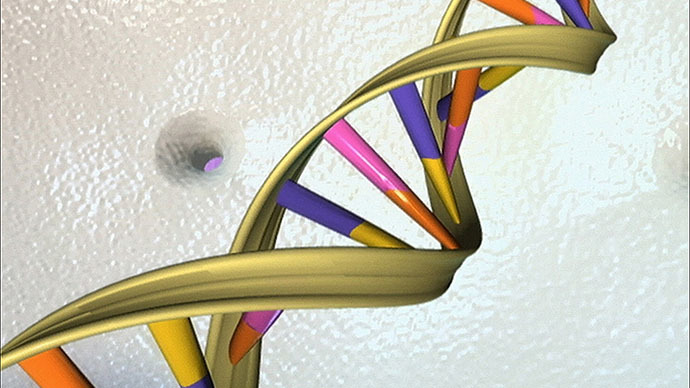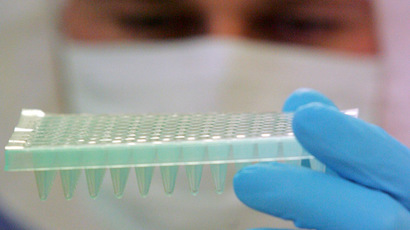Scientists discover secret code hidden within human DNA

Scientists have discovered a secret second code hiding within DNA which instructs cells on how genes are controlled. The amazing discovery is expected to open new doors to the diagnosis and treatment of diseases, according to a new study.
Ever since the genetic code was deciphered over 40 years ago, scientists have believed that it only described how proteins are made. However, the revelation made by the research team led by John Stamatoyannopoulos of the University of Washington indicates that genomes use the genetic code to write two separate languages.
“For over 40 years we have assumed that DNA changes affecting the genetic code solely impact how proteins are made,” said Stamatoyannopoulos, according to the press release. “Now we know that this basic assumption about reading the human genome missed half of the picture.”
Scientists discovered that the second language instructs the cells on how genes are controlled, according to findings published in Science magazine on Friday. The study is part of the Encyclopedia of DNA Elements Project, also known as ENCODE.
DNA (Deoxyribonucleic acid) is a nucleic acid that is the main constituent of the chromosomes of all organisms, except some viruses. DNA is self-replicating, plays a central role in protein synthesis, and is responsible for the transmission of hereditary characteristics from parents to offspring.
The second language remained hidden for so long because one language is written on top of the other, scientists said.
Scientists already knew that the genetic code uses a 64-letter alphabet called codons. The research team discovered that some of the codons can have two meanings – one related to proteins, the other to gene control. Those codons were given the name ‘duons.’
And it’s those duons that are expected to change the way physicians interpret human genomes, and give clues for the treatments of diseases.
“The fact that the genetic code can simultaneously write two kinds of information means that many DNA changes that appear to alter protein sequences may actually cause disease by disrupting gene control programs or even both mechanisms simultaneously,” said Stamatoyannopoulos.
Speaking about the discovery, Stamatoyannopoulos said that the “new findings highlight that DNA is an incredibly powerful information storage device, which nature has fully exploited in unexpected ways.”














